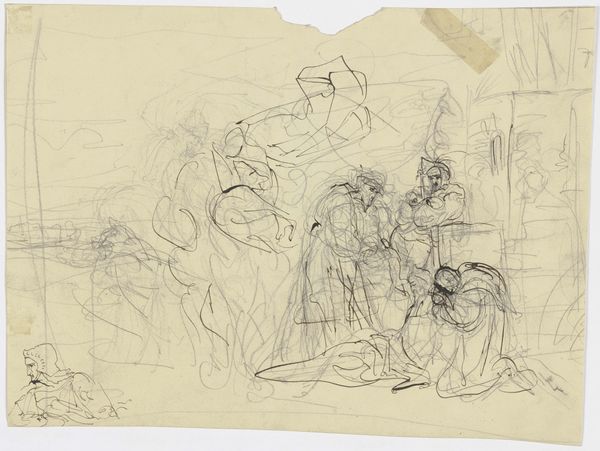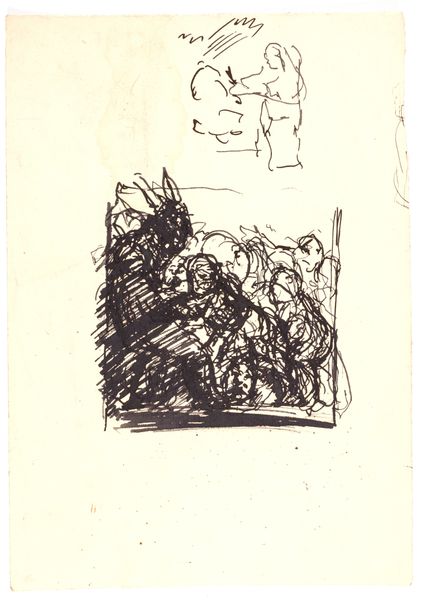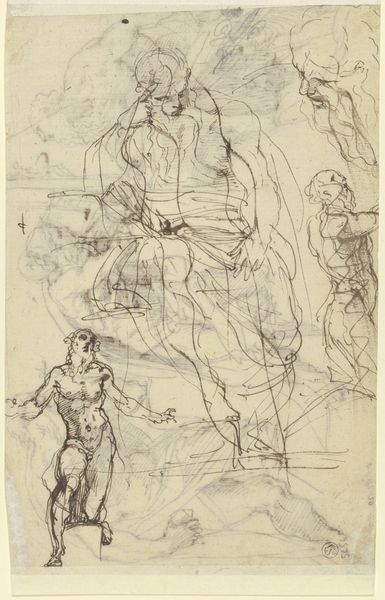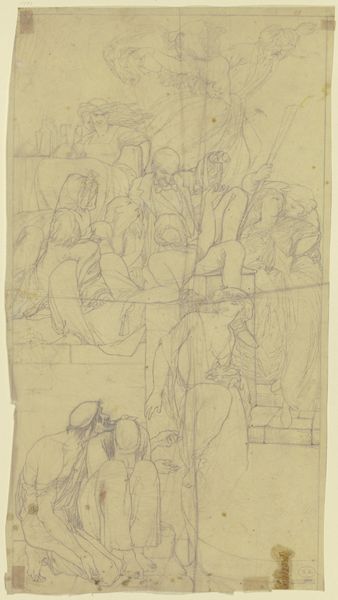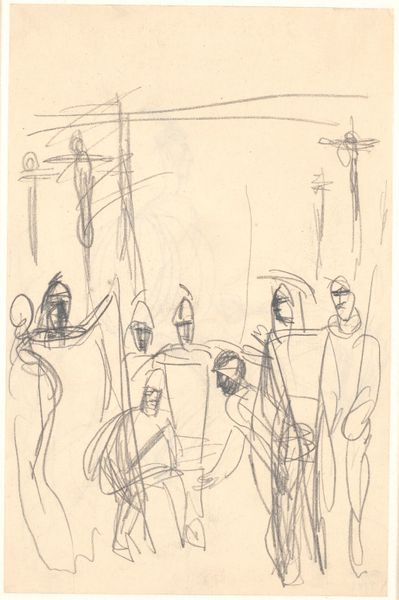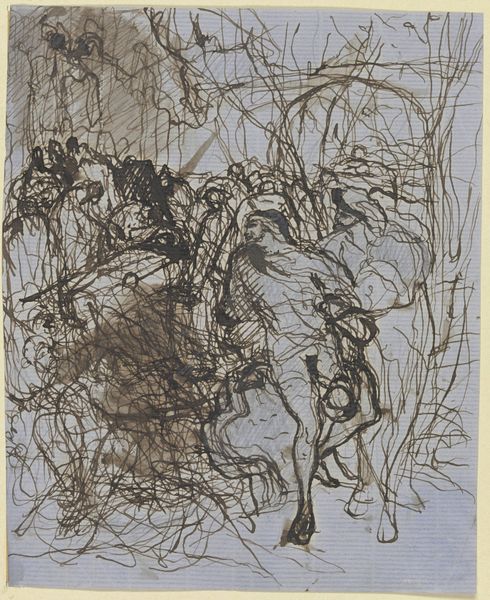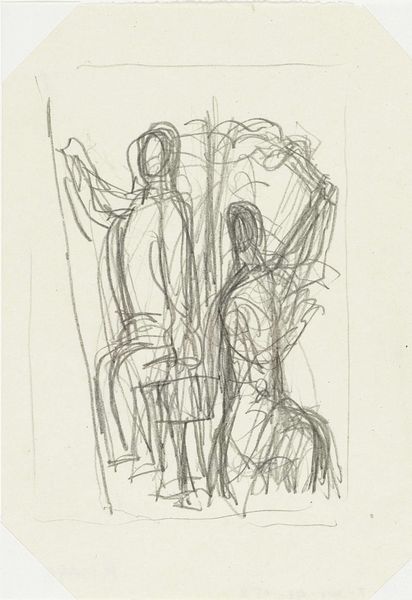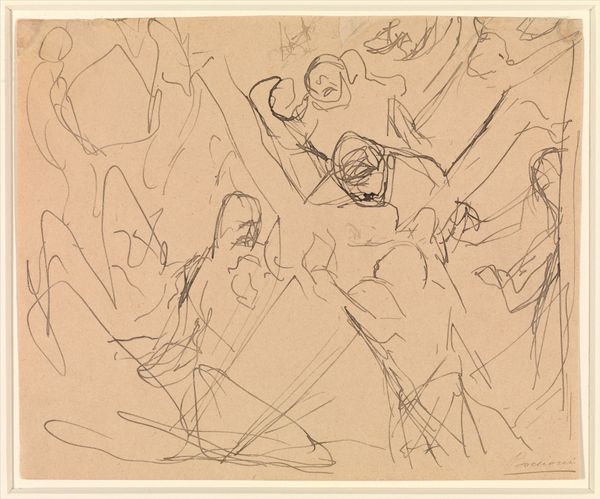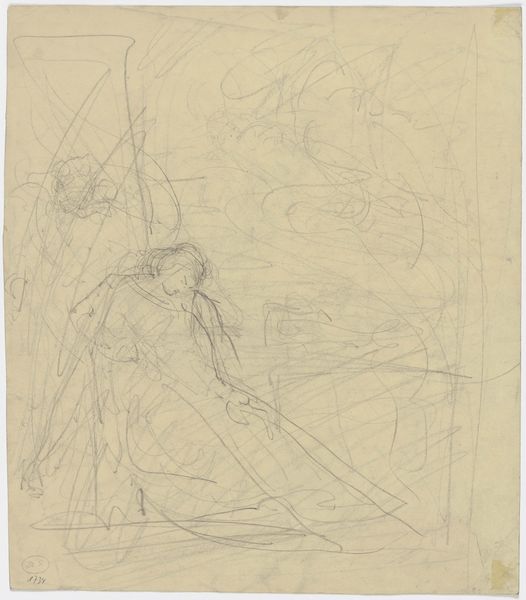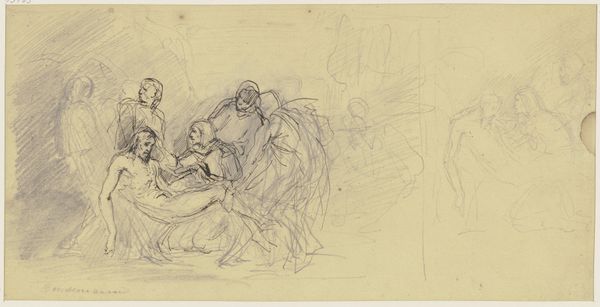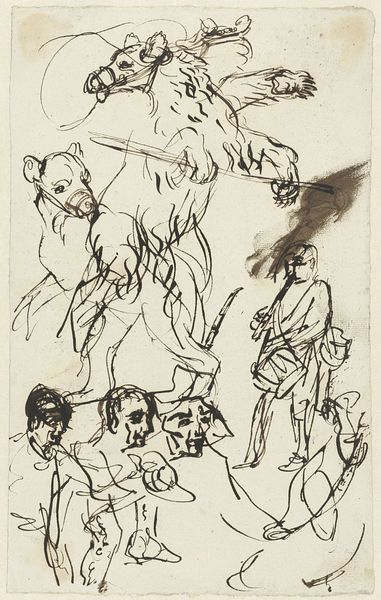
drawing, paper, ink, pen
#
portrait
#
drawing
#
ink drawing
#
16_19th-century
#
ink painting
#
pen sketch
#
figuration
#
paper
#
ink
#
pen
#
history-painting
Copyright: Public Domain
Curator: The artwork before us is entitled "Verschiedene Figuren in historischer Tracht," which translates to "Various Figures in Historical Dress," rendered in pen and ink on paper, attributed to Victor Müller and held at the Städel Museum. It depicts a collection of figures in what appear to be traditional historical costumes. Editor: Immediately, I'm struck by the looseness of the drawing. The figures seem to emerge from a network of lines, almost ghostly. There’s an immediacy to the execution, a sense of raw process laid bare. Curator: Indeed. The hasty pen strokes provide great insight to Müllers process, but there is little detail about the material itself. The paper could tell us a lot about production or accessibility... Perhaps a drawing material study of similar works from this time would grant us a clearer understanding of available resources for this and artists from a similar background. What sociopolitical messages were Muller trying to convey? Were there material restraints on the means of production? Editor: Good points. Focusing on what we *do* see—these characters could easily be pulled from specific historical moments. They bring to mind depictions of courtly life or scenes from historical dramas, but, due to the unfinished nature, it's not very specific. This may speak to a wider 19th century cultural and political interest in history, especially in Germany. Think of the rise of national museums, for example, which played a crucial role in shaping German identity. How does Muller use clothing and bearing to align himself within the popular aesthetic, historical and political interests of his era? Curator: Absolutely, and that’s where it gets interesting materially as well! If Muller's background gives him less financial access to the means of production like his richer contemporaries, it gives clues to who is Muller doing work for, and under what monetary restraints? Perhaps it speaks to the democratization of artistic expression that became possible as industrial printing enabled a proliferation of paper and inexpensive pen nibs and ink, which lead to shifts in patronage and modes of art consumption.. Editor: And the relative ease of accessing the raw materials allowed a freer handling of artistic choices, maybe. Perhaps an exploration into Müllers motivations might allow us to understand how museums themselves construct this narrative of "historical dress". The incompleteness becomes suggestive, allowing viewers to project their own understanding of the past onto these figures, while being a subtle dig at societal perceptions and treatment of marginalized or disenfranchised communities. Curator: Precisely, seeing it in such a grand location adds a layer of legitimacy. Its fascinating how the socio-political forces are tied to production means even in the 19th century. Thanks for sharing that perspective. Editor: Likewise. These explorations really provide a deeper meaning in the cultural values of an artist within their place and time.
Comments
No comments
Be the first to comment and join the conversation on the ultimate creative platform.
